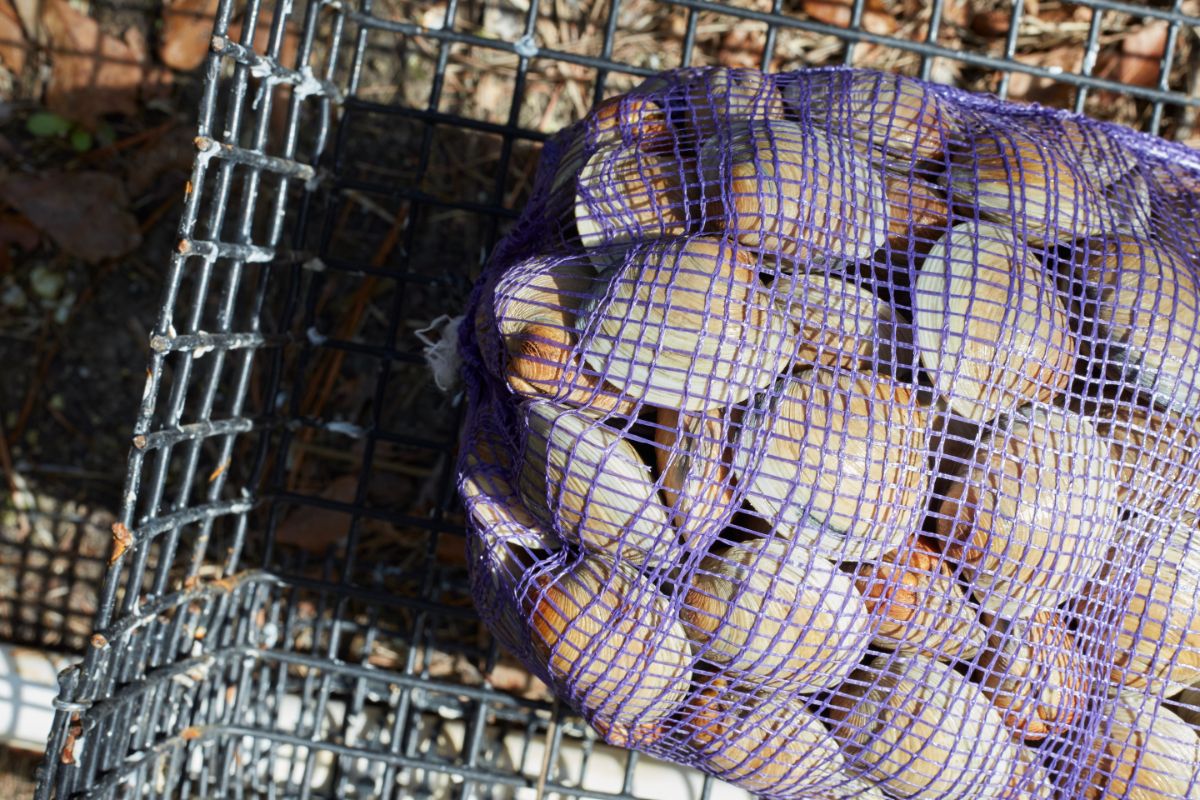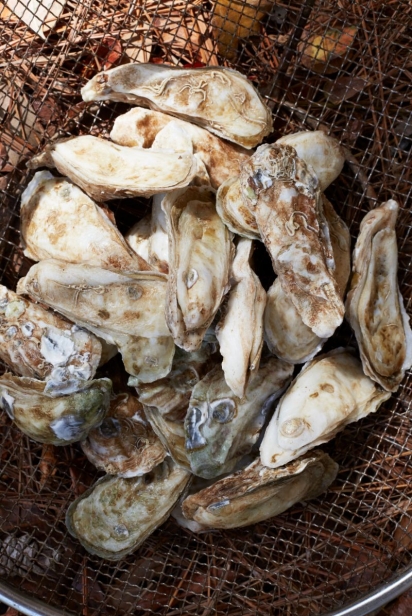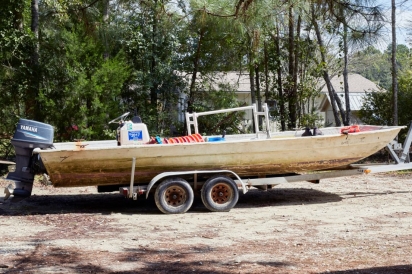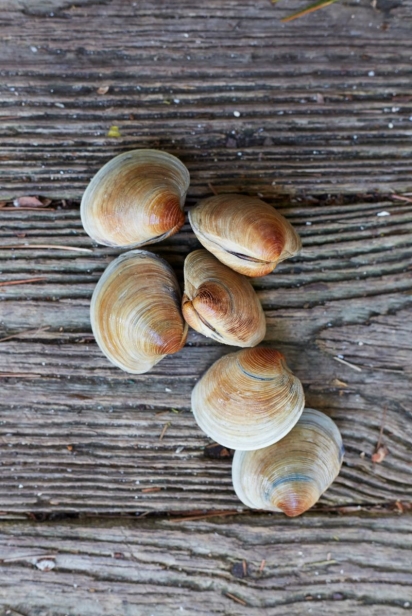Locally Grown Oysters
Former agricultural farmer Dave Belanger, now more commonly known around town as “Clammer Dave,” shifted gears in the late ’90s when he decided to put his farming skills to work in aquaculture. First making a living off of clam farming, Belanger began experimenting with oysters after the nationwide economic crisis in 2008, when he lost a number of his biggest Northeast clients who no longer wanted to buy clams from the South.
“By this time, the price of clams had dropped from 15 cents each to 10 cents, and I knew I had to do something different,” he says.
While attending an oyster roast, Belanger noticed a significant issue with the cluster oysters, which are almost exclusively grown in South Carolina. Attached to the exterior were baby oysters, not to mention many of the shells were filled with mud and sediment.
“By serving clusters with multi-generations attached, they were pretty much throwing away next year’s crop and the next year’s crop,” he says. “I thought that was no way to handle a resource, so if I was going to get into oysters, I would put those babies back where they belong and come out with a higher-quality product.” And create a high-quality product he did.
Today, Belanger’s Caper’s Blades oysters are widely acclaimed up and down the East Coast with customers as far north as New York City purchasing his product. And he sells to some of Charleston’s best restaurants, including Husk, McCrady’s and The Ordinary. Luckily for locals, he sells to individuals as well. While his process specifically involves breaking clusters into single oysters, he will soon be offering a cluster variety, perfect for at-home oyster roasts and completely mudfree.
To cultivate such a superior product, Belanger put in a lot of time, effort and research. He first began fiddling with the clusters to figure out the best way to separate them. Using a centuries-old technique, he isolates them into single oysters with an iron chisel and a piece of granite, a process he now refers to as “sculpting.”
Interestingly enough, Belanger doesn’t do much of the actual harvesting, but rather buys the bivalves from a group of seamen who harvest the shellfish from the banks of Beaufort to McClellanville, though mostly staying around Folly Beach through the northern part of the coast. But, Belanger is very specific about how he likes his oysters picked.
“I explain to the guys exactly how I want the oysters harvested,” he says. “I tell them to leave all that shell, baby oysters and other stuff out on the reef where it belongs and just bring me back oysters. So, they usually bring in a large oyster with one or two attached to it.”
From there, Belanger and his team take the attached oysters inside their McClellanville processing plant, where the surgery-like procedure of sculpting takes place. Once each cluster has been broken into singles, they’re taken to his 25-acre lease on Capers Inlet, where they remain in big, orange buckets, submerged just below the water’s surface for six weeks. During this time, the oysters become plump and rich in taste while the highly oxygenated surface water works to clear out the residual mud, leaving them free of silt.
Unfortunately, there are a number of environmental concerns that are contributing to a declining oyster population. The use of herbicides and pesticides in the area can cause water contamination, changing the chemistry of the ocean, which leaves juvenile oysters particularly at risk. Aside from the issue of chemical runoff, many state-leased harvesting areas are closed this year (as much as 90%, according to Belanger) because there simply aren’t enough oysters to pick. One of the most effective ways to combat this issue is by encouraging a more sustainable practice, like Belanger’s stipulation that baby oysters be left behind, allowing them to continue growing more oysters in the future.
For now, Belanger is doing all that he can to use a viable process and create the finest-tasting oysters. And with the season just opening in September, he says, there’s a big spike in requests as the holidays approach and families plan gatherings centered on roasting and enjoying the bivalves. Though his cluster variety is more expensive, the price tag is worth it. Belanger provides what many call the highest quality oyster on the East Coast. Each cluster has been pressure-washed and is free from mud-filled shells that dominate other, lesser-quality varieties. Plus, supporting local farmers and harvesters encourages a more sustainable food system and allows people access to the freshest possible seafood that comes quite literally from their backyard.
“The oysters around here taste different,” says Belanger. “And they were raised locally. Buying local reduces the carbon footprint, supports a lot of people’s jobs and you know exactly where they came from. I think those are some of the best reasons to buy local.”











